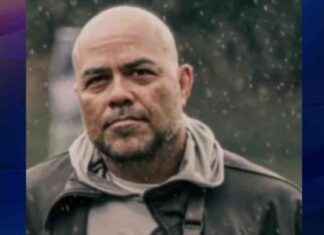Highland Park parade attendees were still hiding from gunshots. They looked for loved ones, cleaned their blood and searched for them when online reactions began to circulate:
One Twitter user wrote, “Before anyone speaks about this being ‘typically Chicago’, Highland Park isn’t Chicago.” “Different region, different county, totally different place. Chicagoland residents will tell you the north shore is not the place to expect this.
Another wrote, “Similar as saying Shaker Heights isn’t Cleveland and Malibu isn’t LA.” “Highland Park is not the place you would expect to find such a well-equipped gunman.” That is perhaps the most frightening part of the story, more so than the deaths and injuries.
Jessica Beard, a fellow at Philadelphia Center for Gun Violence Reporting, said shock in the aftermath of an attack like the Highland Park shooting was normal. She raises eyebrows when people make comparisons between different areas.
Beard, who is also trauma surgeon at Temple University Hospital, said, “My guess is that people mean that they didn’t expect that this would happen to rich white people living in suburbs of Chicago.” “Firearm violence happens all across the country. It can happen to anyone with any sociodemographic characteristic.
A gunman opened fire at the Highland Park July 4th parade, injuring many more and killing seven others. It was one of five mass shootings across the country Monday.
According to The Gun Violence Archive, one person was killed in mass shootings in Massachusetts and California. 18 others were injured in shootings in Virginia, Missouri, Virginia, and Chicago. According to the archive’s tracker, there have been 314 mass shootings across the United States this year.
What does it mean to be shocked by shootings in certain areas but not others?
Rashawn Ray, a Brookings Institution fellow and who heads the Lab for Applied Social Science Research, said that “a lot of it boils down to where people are comfortable in.” This is evident in Ray’s media analysis of Highland Park’s crime statistics compared to Chicago’s. Ray stated that it was also about demographics.
He said that there are many crime rates in each area. “But, it’s also classified and racialized in terms who is perceived as potential criminals… and who is perceived as potential victims.”
Similar issues were raised by him in March, when Russia invaded Ukraine.
He said that there were a number of journalists and media reporters who were framing and phrasing their statements in “aEUR”, where they would refer specifically to Ukrainians in a way that aligns them and Europeans. This suggested that “these types of incidents don’t happen here.”
Beard, a trauma surgeon at Temple University Hospital sees the parallel in gun violence in the U.S.
Mass shootings are defined by the Gun Violence Archive as any incident in which at least four victims, excluding the shooter, are injured or killed and shot. Beard states that she is responsible for mass casualties almost every day at her hospital.
“But someone who was not fatally shot in Philadelphia may never be covered by the media.” She said that half of those who are shot in Philadelphia don’t make it into the news.
Beard says journalists must tell the story about daily gun violence.
She led a 2021 research study that examined the hospital’s gun-related injuries patients and their loved ones. She stated that none of these people had been interviewed by journalists. Their trauma was compounded by the media’s focus on shootings elsewhere, and the constant stream of comments about how “this shouldn’t happen here” or “the last place you’d expect.” Beard stated that gun violence was inevitable because her patients lived in Philadelphia.
She said, “It feels degrading.” “And while I believe reporting on those events can be important, it can make it seem and feel like the lives of people who are affected by more common forms interpersonal gun violence don’t matter.”
Rashawn Ray stated that sometimes, in times of panic or fear, people need to point fingers to help them understand the situation, even if it means blaming victims. It all depends on the person they are.
“I believe empathy is the key. He said that many of us can sympathize with what happened in Highland Park. “Whereas people go to the west or south side of Chicago,… they have less empathy as it is blaming those in that area. These accusations are rarely made against predominantly white areas.
Ray stated that communities caught up in violence can turn to the “lonewolf” approach when they are targeted by mass shooters. Instead of looking at how their own might have turned against them, Ray suggested.
He said, “Doing so would mean that people living in those areas, as well as people in media who contribute to this narrative, have to assume some of these specific actions.” “And people aren’t ready to do that.”








